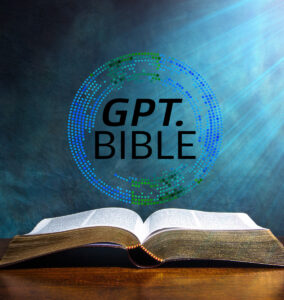Mark the “Re-write Man”
In his article, “My Search for the Synoptic Problem’s Solution,” Hebrew scholar Robert Lindsey of the Jerusalem School makes the following statements regarding his findings:
As a consequence of my endeavor to produce a Modern Hebrew translation of the Gospel of Mark, however, I began to develop a different picture of the interrelationship of the Synoptic Gospels. This new picture began to emerge from my observation that whereas the portions of Matthew and Luke that have no parallel to Mark translate quite naturally into Hebrew, Mark’s Gospel (and Matthew’s parallel passages) presented certain difficulties. Although Mark also had many lines and phrases that translated easily into Hebrew, these were often interrupted with words and expressions that are nearly impossible to translate into Hebrew. Luke, on the other hand, even when in parallel to Mark, presented no such difficulties… I further came to the surprising conclusion that Mark was not the earliest of the Synoptic Gospels, but that Mark followed Luke, rewriting and revising Luke’s wording, and that Matthew later followed Mark, but also had access to the earlier Hebraic-Greek account of the life of Jesus that was the basis of Luke’s Gospel. I realized that, if true, my theory would both explain Mark’s traditional unpopularity, and lead to a serious reassessment of the prevailing view of Mark’s position among the Gospels. The basic reason for Mark’s unpopularity is that it was written by an early Jewish Christian who rewrote the gospel story using the midrashic methods of early rabbis … a rabbinic phrase which can be paraphrastically translated as “homilize it and bend it to apply to your need.” (Robert L. Lindsey, “My Search for the Synoptic Problem’s Solution,” Jerusalem Perspective (2013))
Rather than assuming that Luke used Mark as the basis of his Gospel, as is commonly held by most New Testament scholars, it appears that the opposite is true. Mark employed Luke’s Gospel, along with another early source, and the result is a Gospel that is almost as much annotation and comment as original story. Mark’s principal method was to replace about half of Luke’s earlier and more authentic wording with a variety of synonyms and expressions he culled from certain Old and New Testament books that, today, we can identify usually simply by consulting Greek and Hebrew concordances of the Bible… Like the rabbis, Mark loved to find linguistic parallels to the text he was copying in other, often unrelated, books, and then mix words and phrases taken from these parallels with others of his sources. This method resulted in an amplified text that many scholars had thought gave an authenticity to Mark’s work, but which, in reality, should be described as a fascinating but rather inauthentic dramatization of the Gospel story. Due to Mark’s quite normal midrashic and aggadic Jewish methods, his Gospel is the “first cartoon life of Christ.” Mark was a “re-write man.” (Robert L. Lindsey, “My Search for the Synoptic Problem’s Solution,” Jerusalem Perspective (2013))

Mark as a Dramatizer
After conducting a four-part analysis of taking a statistical approach to solving the Synoptic problem, Halvor Ronning concluded that the Lukan Priority theory was the best solution that fit the empirical evidence (See Statistical Validation of Lukan Priority). In the last article of the series, Ronning follows up his conclusion with an assessment of Mark.
“In relation to … Jewish writers, we can judge that Luke was more steady and less innovative in relation to his sources. Even though we do not have copies of Luke’s sources we can observe how Luke preserved whole blocks of material that are more consistently easy to translate into Hebrew than the parallel material in Mark or Matthew. Luke does not share the same degree of erratic character with respect to Hebrew retroversion as does Mark. Like Luke, Matthew is also generally easier to revert to Hebrew than Mark, except where Matthew has a Markan parallel. Where Matthew has a Markan parallel, Matthew is just as difficult to revert to Hebrew as Mark. These observations are the origin of Lindsey’s insights regarding the dependence of Matthew on Mark, and the independence of Luke from either. Mark’s Gospel, on the other hand, exhibits the expansionist characteristics of a Jewish midrashic or targumistic storyteller. Like a targumist, Mark absolutely refused to replicate the wording of Luke… Mark’s editorial activity is not a matter of high theological interference with his sources. As a Jewish author, Mark simply followed in the footsteps of good targumic style: he dramatized his source by substituting synonyms, adding words from elsewhere, and rearranging and reversing word orders; anything to hold the reader’s attention and fascination. (Mark also demonstrates that he had an intensely active associative mind by recalling of words and phrases and ideas from the Septuagint and the writings of Paul and working these words and ideas into his paraphrase of Luke’s text. (Halvor Ronning, “A Statistical Approach to the Synoptic Problem: Part 4—Non-Linear Hypotheses,” Jerusalem Perspective (2016))
Due to this ‘targumic’ activity the stories Mark told are almost always (literally 80% of the time) longer than the parallel accounts in Luke and Matthew. Mark is the longest Gospel, not the shortest in terms of the actual stories he decided to incorporate. Mark is shortest only in terms of overall length, but that is only because of the stories and sayings he chose to omit. Mark’s expansionist style fits his character as a sophisticated targumic story teller. (H. Meijboom A History and Critique of the Origin of the Marcan Hypothesis 1835-1866 (trans. John J. Kiwiet; Macon: Mercer, 1993; Dutch 1866), 105-115.) (Halvor Ronning, “A Statistical Approach to the Synoptic Problem: Part 4—Non-Linear Hypotheses,” Jerusalem Perspective (2016))
Mark’s Editorial Changes
As Lindsey had concluded in the previous work, Mark was not interested in transmitting his sources as he had received them. Instead, Mark’s editorial style is characterized by creativity. Lindsey noted numerous characteristics in how Mark treated his sources.
- Relocation of parts from the Lukan order to a new context.
- Rewriting parts by substituting synonyms for the words Mark found in his source(s).
- Rewriting parts using vocabulary Mark had picked up from various later sources. These “Markan pick-ups” allowed Mark to show how the stories about Jesus resonated in the experiences of the later Church.
- Radical abbreviation in some places
- Expansion of parts by adding detail and duplicating phrases
By analyzing Lukan-Matthean minor agreements against Mark and by comparing Markan usage to the style of Luke (Mark’s main source), David Bivin provides an expanded list of examples of editorial changes that are evidenced in Mark under the categories of Grammar, Vocabulary and Literary Techniques. An outline is provided below. See the referenced article, David N. Bivin, “LOY Excursus: Mark’s Editorial Style,” Jerusalem Perspective (2021) for more expansionary detail and examples.
Grammar:
- The author of Mark changed verbs from aorists to historical presents.
- The author of Mark changed verbs from aorists to imperfects.
- The author of Mark added genitive absolute constructions to his source.
- The author of Mark added ἵνα + subjunctive constructions to his source.
- The author of Mark made frequent use of explanatory γάρ clauses in narration.
- The author of Mark frequently stacked prepositional phrases to modify the same clause without separating them with conjunctions. These stacked prepositional phrases are often lacking in the Matthean and Lukan parallels.
Vocabulary
- The author of Mark replaced regular nouns in his source(s) with diminutive forms.
- The author of Mark multiplied words of astonishment. Three Markan words for amazement (ἐκθαυάζειν, θαμβεῖσθαι, ἐκθαμβεῖσθαι) do not appear at all in Luke or Matthew.
- The author of Mark multiplied question verbs.
- The author of Mark, along with the Synoptic Gospel writers, inserted Aramaic phrases into his narratives. Many Semitic words in the Gospels (e.g., mammon, korban, rabbi, abba) are found in both Hebrew and Aramaic. However, Mark’s is the only Gospel to incorporate words that are unambiguously Aramaic transliterations… In fact, it appears that all the Aramaic phrases in Mark are secondary.
- The author of Mark introduced Latin loanwords into the text of his Gospel.
- The author of Mark picked up certain words and phrases from Luke and Acts (e.g., εὐθύς) and repeated them incessantly in a style Lindsey referred to as “stereotyping.”
Literary Techniques
- The author of Mark added redundant or reiterative descriptions, such as “creation, which God created” (Mark 13:19).
- The author of Mark repeated phrases and whole sentences within the same story.
- The author of Mark converted statements into questions. Several statements that occur in direct speech in the Gospel of Luke are transformed into questions (rhetorical or otherwise) in the Gospel of Mark.
- The author of Mark placed two or more questions in rapid succession in the mouth of a single speaker before allowing the interlocutor(s) to respond.
- The author of Mark added and expanded Scripture quotations.
- The author of Mark heightened drama.
- The author of Mark added vivid descriptions.
- Numerical specificity
- Supplying names of anonymous individuals
- Supplying additional biographical detail
- Providing psychological insight
- Introducing elements of Hellenistic thaumaturgical practice into his healing narratives.
By making alterations such as we have described above, the author of Mark expanded sayings and narratives. Partly as a result of the editorial techniques outlined above, Mark’s pericopae are generally longer than their Matthean and Lukan counterparts. Although Mark is the shortest Gospel, this is because the author of Mark elected to report fewer stories, not because he was given to brevity.
- The author of Mark set narratives in apparently ownerless houses usually to emphasize contrast between those who belonged to Jesus’ intimate circle of followers on the inside and the ambivalent crowds or Jesus’ antagonists on the outside.
- The author of Mark inverted Luke’s word order.
- The author of Mark transposed the order of events as they appear in Luke.
- The author of Mark duplicated stories in his text, creating a second story resembling the first and partially preserving its vocabulary.
- The author of Mark expanded the use of “sandwiching” or “intercalation” by creating two-part narratives and inserting another narrative between the two parts.
In conclusion of the article, Bivin states the following:
Scholars often refer to the editorial alterations of Mark (alterations often followed by Matthew) as “vivid detail” or “freshness,” assuming these “primitive” readings to be a sign of Mark’s originality. However, once Mark’s Gospel is recognized as dependent on Luke’s, Mark’s editorial style becomes unmistakable. (David N. Bivin, “LOY Excursus: Mark’s Editorial Style,” Jerusalem Perspective (2021)
The author of Mark’s modus operandi was to make almost every kind of change to his text that an editor can make. Often his changes appear to be without purpose—simply change for the sake of change. Yet, although to post-Enlightenment western readers Mark’s treatment of his sources may seem arbitrary and even indefensible, there are ancient Jewish models for Mark’s editorial techniques in the later rabbinic aggadic midrashim and in the targumim. (David N. Bivin, “LOY Excursus: Mark’s Editorial Style,” Jerusalem Perspective (2021)
Jerusalem School References
- Lockton, William. (1922). The Origin of the Gospels. Church Quarterly Review 94 (1922), 216-239.)
- Robert Lisle Lindsey, “A Modified Two-Document Theory of the Synoptic Dependence and Interdependence,” Novum Testamentum 4 (1963) 239-263. This article reflects an earlier stage of Lindsey’s investigations than that found in his book. [Lindsey’s Novum Testamentum article has been reissued on Jerusalem Perspective as A New Two-source Solution to the Synoptic Problem]
- Robert L. Lindsey, A Hebrew Translation of the Gospel of Mark, (1973) Introduction
- Robert L. Lindsey, Introduction to A Hebrew Translation of the Gospel of Mark, Jerusalem Perspective (2014)
- Robert L. Lindsey, My Search for the Synoptic Problem’s Solution (1959-1969), Jerusalem Perspective (2013)
- Robert L. Lindsey, Measuring the Disparity Between Matthew, Mark and Luke, Jerusalem Perspective (2015)
- David Flusser, Character Profile: Who was John Mark?, Jerusalem Perspective (2013)
- David N. Bivin, Selected Examples of Rewriting in Mark’s Account of Jesus’ Last Week, Jerusalem Perspective (2004)
- David N. Bivin, A new Solution to the Synoptic Problem, Jerusalem Perspective, Revised 2022,
- David N. Bivin, LOY Excursus: Mark’s Editorial Style, Jerusalem Perspective (2021)
- David N. Bivin, LOY Excursus: Catalog of Markan Stereotypes and Possible Markan Pick-ups, Jerusalem Perspective (2023)
- Halvor Ronning, A Statistical Approach to the Synoptic Problem: Part 1—Triple Tradition, Jerusalem Perspective (2015)
- Halvor Ronning, A Statistical Approach to the Synoptic Problem: Part 2—Double Tradition, Jerusalem Perspective (2016)
- Halvor Ronning, A Statistical Approach to the Synoptic Problem: Part 3—Single Tradition, Jerusalem Perspective (2016)
- Halvor Ronning, A Statistical Approach to the Synoptic Problem: Part 4—Non-Linear Hypotheses, Jerusalem Perspective (2016)
- W. Richard Stegner, The Priority of Luke: An Exposition of Robert Lindsey’s Solution to the Synoptic Problem, Jerusalem Perspective (2020)

